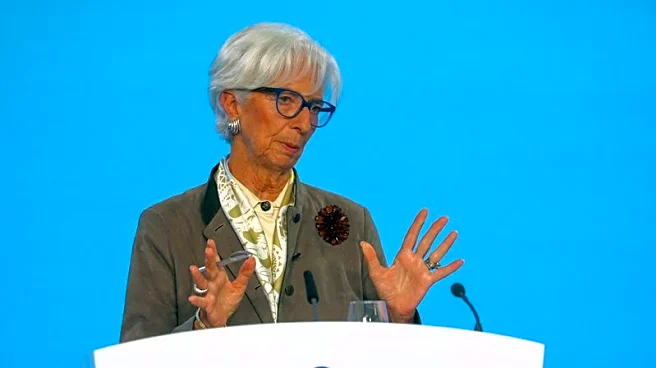What's Happening?
A significant Roman silver hoard, initially discovered in 2017 by an unnamed metal detectorist near Borsum, Germany, has been officially announced by authorities in Lower Saxony. The hoard, which includes
450 silver coins, several silver bars, a gold ring, and a gold coin, was kept secret for eight years before the detectorist contacted the police and cultural authorities in April. The improper initial excavation destroyed the original context, but a follow-up dig by archaeologists recovered additional coins. The hoard is now under research to determine its origin and purpose, with initial signs suggesting it dates back to the early Roman Imperial era.
Why It's Important?
The discovery of the Roman hoard is significant for historical and archaeological research, offering insights into the trade and conflict dynamics between Rome and northern Germanic tribes during the early Roman Imperial era. The hoard's revelation underscores the importance of proper archaeological practices and the legal requirements for metal detecting, as improper handling can lead to the loss of valuable historical context. The incident also highlights the need for public awareness and adherence to regulations to preserve cultural heritage.
What's Next?
Archaeologists and historians will continue to study the hoard to establish a precise chronology and assess its origins. The findings could provide valuable information about Roman activities in the region. The individual who discovered the hoard has participated in a state-run metal detector course, and the investigation against him has been dropped due to the statute of limitations. Authorities emphasize the necessity of permits for metal detecting to prevent the loss of archaeological finds.
Beyond the Headlines
The case raises ethical questions about the responsibilities of amateur archaeologists and the potential consequences of unauthorized excavations. It also highlights the delicate balance between public interest in archaeology and the need for professional oversight to protect cultural heritage.













